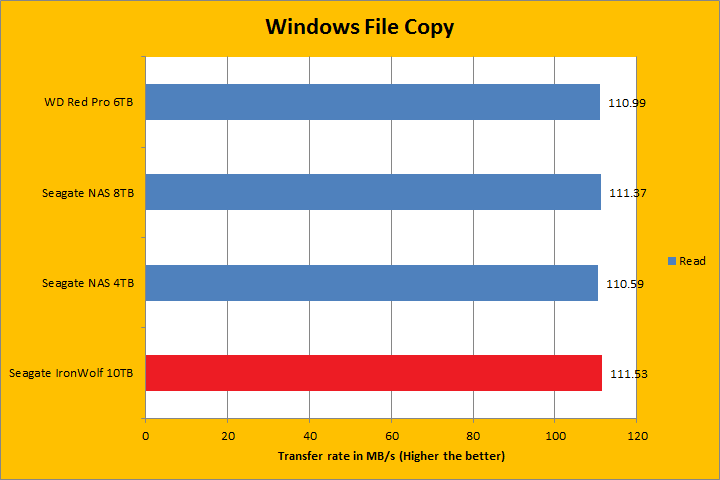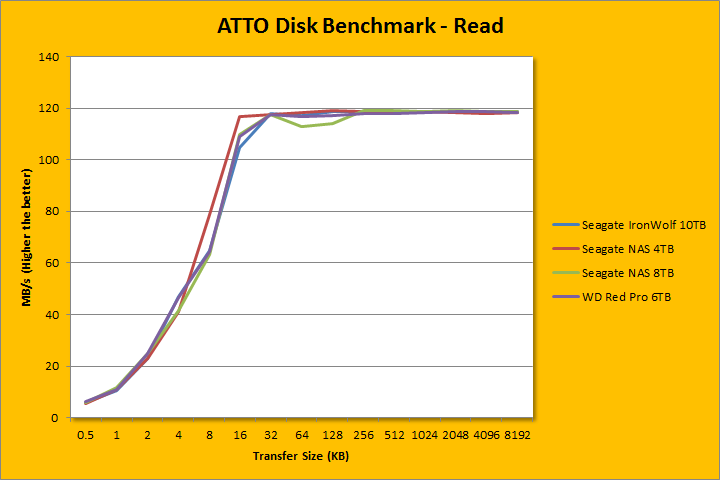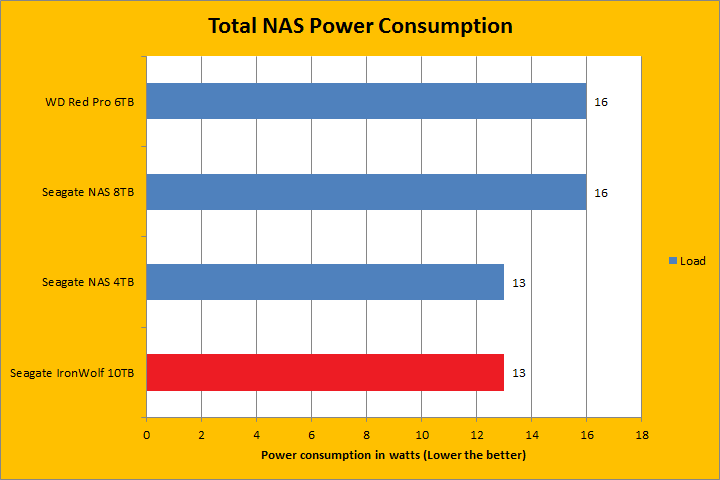Page 10 - NAS Performance, Power Consumption
For our network attached storage tests, I used an ASUSTOR AS3202T hooked up using an array of CAT5e cables and a Gigabit switch. The AS3202T is one of the fastest NAS we have tested here at APH Networks for linear read/write performance. The client computer was configured with the following specifications:
CPU: Intel Core i7-4790K @ 4.6GHz
CPU Cooling: Noctua NH-D15S
Motherboard: Gigabyte GA-Z97X-UD3H-BK
RAM: Patriot Viper 3 Low Profile PC3-17000 4x8GB
Graphics: Gigabyte G1 Gaming GeForce GTX 960 4GB
Chassis: Fractal Design Define R5
Storage: OCZ Vector 180 240GB; Crucial MX200 500GB
Power: PC Power & Cooling Silencer Mk III 1200W
Sound: Auzentech X-Fi Bravura
Optical Drive: LiteOn iHAS224-06 24X DVD Writer
Operating System: Microsoft Windows 10 Pro


Loaded with different hard disk drives, our ASUSTOR AS3202T was ready to roll. According to the engineers at NAS manufacturer QNAP, and proven to be true in our performance benchmarks, Intel Gigabit LAN adapters -- at least on the client side -- traditionally performs better than their Realtek and Marvell counterparts. Therefore, to prevent any bottlenecks on the client side, our Gigabyte GA-Z97X-UD3H-BK motherboard was connected to the network via its integrated Intel Gigabit LAN adapter. We also conducted the above test on our OCZ Vector 180 240GB solid state drive on the client side to ensure there was nothing limiting the performance of our ASUSTOR AS3202T than the NAS itself. In both the read and write test, all tested HDDs came to a statistical tie, as we have saturated the bandwidth limit of the Gigabit Ethernet interface.


ATTO disk benchmark provides valuable insight into evaluating disk performance; it is especially valuable since it is not local disk limited like Windows file copy -- but rather the network adapter itself. After first using it in our QNAP TS-559 Pro+ review back in 2010, ATTO has been an integral part of our storage benchmarks; used in everything ranging from USB flash drives to solid state disks. Venturing in the area of 117MB/s in read and write for pretty much everything 32K and up, remember that the theoretical maximum of Gigabit Ethernet is 'only' 125MB/s (1000Mbps / 8) with overhead -- this is downright impressive. The IronWolf 10TB's ramp up profile was very similar to the NAS HDD 8TB.


With one hard drive installed, our ASUSTOR AS3202T consumed the most power with Seagate's NAS HDD ST8000VN0002 8TB installed. Thanks to the helium fill as discussed on Page 2 of this review, the IronWolf ST10000VN0004 10TB is actually very efficient, especially considering its capacity. As most network attached storage systems will be running 24/7, and there will more than likely be multiple hard drives installed, every watt will definitely add up on your power bill. When idling, the entire system equipped with the 7,200RPM IronWolf 10TB took only 11W; one more than the 5,900RPM NAS HDD 4TB. This is a whopping 2W difference for just one drive alone compared to the 8TB NAS HDD. The gap continues to widen in our load tests. The system equipped with the Seagate IronWolf 10TB was excellent, considering its speed and capacity. At 13W, it was exactly the same as the slower 5,900RPM Seagate NAS HDD 4TB, which was considerably lower than the Western Digital Red Pro 6TB and Seagate NAS HDD 8TB.
Page Index
1. Introduction, Features, Specifications
2. A Closer Look, Test System
3. Benchmark: AIDA64 Disk Benchmark
4. Benchmark: ATTO Disk Benchmark
5. Benchmark: Crystal Disk Mark 3.0
6. Benchmark: HD Tach 3.0.1.0
7. Benchmark: HD Tune Pro 4.60
8. Benchmark: PassMark PerformanceTest 8.0
9. Benchmark: PCMark 7
10. NAS Performance, Power Consumption
11. Conclusion





